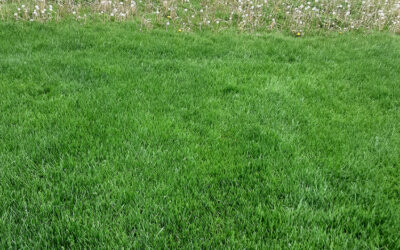The Best Time to Mulch: How Mulching Improves Your Spring Garden
As spring approaches and gardeners eagerly prepare their beds for a season of growth, one task stands out as perhaps the most impactful yet underappreciated: mulching. Timing this essential garden practice correctly can make all the difference between a garden that merely survives and one that truly thrives throughout the growing season.
The Perfect Timing for Spring Mulching
The ideal time to apply mulch in spring is after the soil has warmed but before summer heat sets in—typically late April to mid-May in most regions. Mulching too early can insulate the cold soil and delay plant growth, while waiting too long means missing out on early-season benefits.
Here’s how to know when the time is right:
- Soil temperature should consistently reach 65-70°F
- Spring bulbs and perennials should be well-established
- After the last frost date in your region
- Once spring weeds have been thoroughly removed
Benefits of Mulching for Moisture Retention and Weed Prevention
Moisture Management: Your Plants’ Best Friend
Perhaps the most significant advantage of proper mulching is moisture retention. A 2-3 inch layer of mulch can reduce water evaporation from soil by up to 70%, meaning:
- Less frequent watering is needed, saving time and resources
- Plants experience fewer drought stress symptoms
- Root systems develop more deeply and robustly
- Soil microorganisms thrive in the consistently moist environment
During spring’s unpredictable weather patterns, this moisture buffer becomes invaluable, providing stability for delicate new growth and recently planted additions to your garden.
Winning the Weed War
Spring is prime time for weed germination, but a proper mulch barrier can dramatically reduce their presence. Mulch works as a physical barrier against weeds by:
- Blocking sunlight from reaching weed seeds, preventing germination
- Making it difficult for emerging weeds to establish themselves
- Creating clear contrast that makes spotting and removing invaders easier
- Reducing the need for chemical herbicides and excessive cultivation
For maximum weed suppression, aim for mulch depth of 3-4 inches in areas prone to aggressive weed growth.
Best Types of Mulch for Different Plants and Landscapes
Not all mulches are created equal, and choosing the right type for your specific garden needs can enhance its effectiveness.
Organic Mulch Options
Wood Chips and Bark Mulch
- Perfect for: Trees, shrubs, and established perennial beds
- Benefits: Slow to decompose, attractive appearance, improves soil over time
- Considerations: Avoid placing directly against woody stems to prevent rot
Compost
- Perfect for: Vegetable gardens, annual beds, areas needing soil improvement
- Benefits: Adds nutrients as it breaks down, improves soil structure
- Considerations: Breaks down quickly, may need more frequent replenishment
Straw
- Perfect for: Vegetable gardens, strawberries, newly seeded areas
- Benefits: Excellent moisture retention, decomposes to add organic matter
- Considerations: Can attract pests if placed too close to structures
Leaf Mold
- Perfect for: Woodland gardens, shade plants, acid-loving plants
- Benefits: Free resource, mimics natural forest floor conditions
- Considerations: Can mat down if not partially decomposed first
Inorganic Mulch Options
River Rock or Decorative Stone
- Perfect for: Drought-tolerant landscapes, paths, drainage areas
- Benefits: Never needs replacement, excellent drainage, striking appearance
- Considerations: Does not improve soil, can heat up in summer
Landscape Fabric
- Perfect for: Under stone mulches, problem weed areas
- Benefits: Long-lasting weed suppression
- Considerations: Eventually breaks down, can look artificial if exposed
How Often to Refresh Mulch for Long-Term Results
Maintaining your mulch is key to continuing its benefits throughout the seasons. Here’s a general timeline for optimal mulch management:
Annual Refreshing
Most organic mulches break down over time—this is actually beneficial as they contribute to soil health, but it means they need regular refreshing. For most gardens:
- Spring: Assess existing mulch depth and replenish to maintain 2-3 inches
- Fall: Add a thin layer (1 inch) to protect roots through winter
Rather than removing old mulch completely, simply top it up as needed, unless disease is present or it has become compacted.
Signs It’s Time to Add More Mulch
Watch for these indicators that your mulch needs attention:
- Mulch depth is less than 2 inches
- Soil is visible through the mulch layer
- Weeds are beginning to emerge
- Water runoff has increased
- Mulch color has faded significantly
Avoid Over-Mulching
While regular refreshing is important, more isn’t always better. “Mulch volcanoes” around trees and excessive depth can cause:
- Root suffocation
- Bark rot on woody plants
- Habitat for pests
- Poor water penetration to soil
Maintain a consistent 2-3 inch depth for most applications, and keep mulch pulled back several inches from plant stems and tree trunks.
Beyond the Basics: Advanced Mulching Strategies
Once you’ve mastered timing and material selection, consider these professional tips:
- Edge your beds before mulching for a clean, defined look that contains mulch effectively
- Pre-treat areas with corn gluten meal to further prevent weed germination before applying mulch
- Use mulch colors strategically – darker mulches warm soil faster in spring, lighter colors reflect heat in summer
- Consider sheet mulching (layering cardboard under mulch) for converting lawn areas to garden beds
- Apply mulch after a rain when soil is moist for maximum moisture retention benefits
Conclusion
Spring mulching is more than just an aesthetic touch—it’s a foundational practice that sets the stage for garden success throughout the growing season. By timing your application correctly, choosing appropriate materials, and maintaining proper depth, you create an environment where plants can thrive with less intervention. This spring, make mulching a priority and watch as your garden rewards you with healthier plants, fewer weeds, and more efficient water use.
Remember that the best gardens aren’t just created through planting—they’re sustained through thoughtful practices like strategic mulching that work with nature rather than against it.



